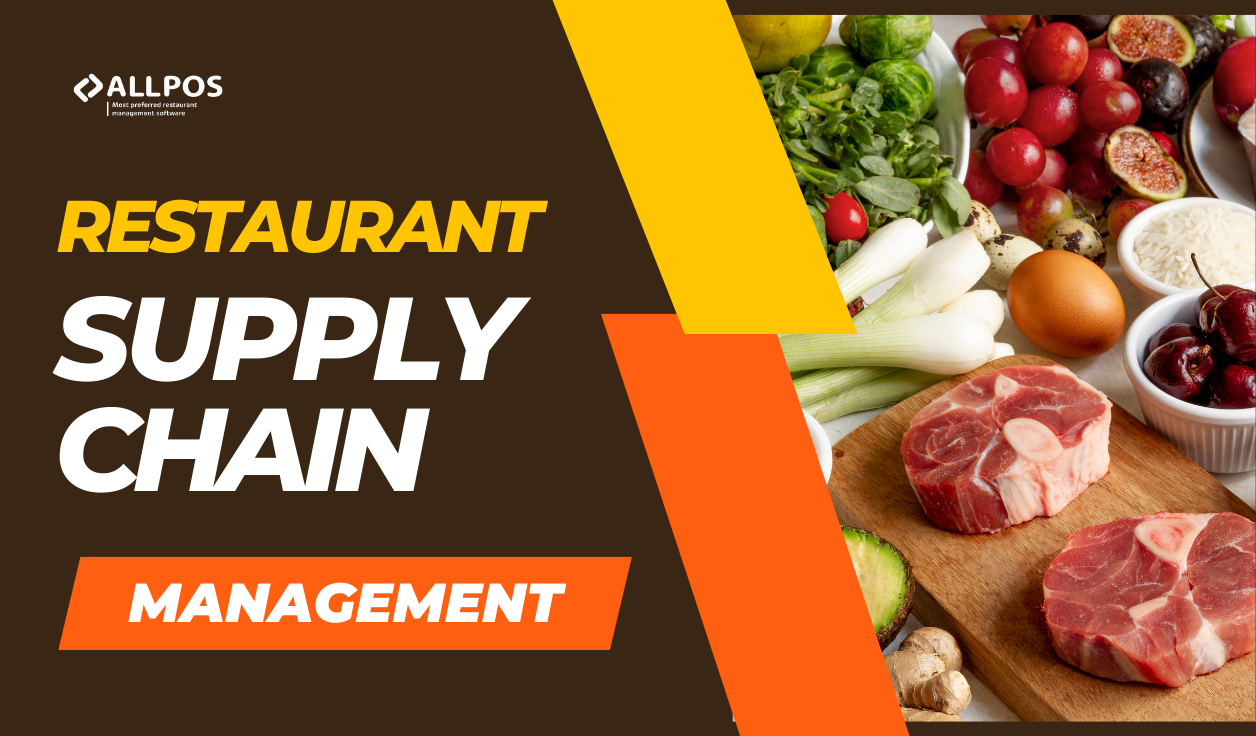Restaurant Supply Chain Management - Ensuring Freshness and Efficiency

Imagine your favorite restaurant, where you savor delicious dishes and enjoy great service. But have you ever wondered how all those ingredients and supplies make their way to your plate? That's where the restaurant supply chain comes into play, and at its core is something called Supply Chain management. In this blog post, we'll break down what supplier management means for restaurants, talk about the challenges it brings, and share some practical tips on how to handle it smoothly. So, let's dive in and discover the secrets behind your favorite restaurant's supply chain!
What is Restaurant Supply Chain Management?
Restaurant supply chain management is the process of overseeing the flow of goods and services from suppliers to the kitchen and ultimately to the customer's plate. It involves all the activities required to source, procure, transport, store, and manage inventory efficiently to ensure that a restaurant runs smoothly and meets its customers' demands consistently.
Challenges in Restaurant Supply Chain Management
Quality and Freshness: Restaurants are under constant pressure to provide fresh, high-quality ingredients to maintain their reputation. Ensuring that ingredients arrive in the right condition and are used promptly is a significant challenge.
Inventory Management: Balancing inventory levels is crucial. Too much inventory can lead to wastage, while too little can result in stockouts, disappointing customers, and revenue loss.
Supplier Relations: Building and maintaining strong relationships with suppliers is vital. A breakdown in communication or trust can disrupt the supply chain and affect a restaurant's operations.
Food Safety and Compliance: Restaurants must adhere to strict food safety regulations. Ensuring that all supplies meet these standards is essential, and non-compliance can lead to legal issues and damage to the restaurant's reputation.
Seasonal Variations: Many restaurants change their menus seasonally to offer fresh and diverse dishes. Adapting the supply chain to accommodate these changes can be challenging.
Cost Management: Controlling costs is crucial for the restaurant's profitability. Effective supply chain management can help reduce expenses related to procurement, storage, and transportation.
How to Manage Restaurant Supply Chain Effectively
Supplier Selection: Choose reliable suppliers who can consistently provide quality products. Consider factors like pricing, delivery reliability, and the ability to accommodate changes in your menu.
Inventory Management Systems: Implement inventory management software to track stock levels, monitor expiration dates, and forecast demand. This technology can help you optimize inventory and reduce waste.
Demand Forecasting: Analyze historical sales data to predict future demand accurately. This enables you to order the right quantities at the right times, reducing the risk of overstocking or stockouts.
Communication and Collaboration: Maintain open lines of communication with your suppliers. Regularly communicate your needs and any changes to your menu or demand forecasts. Collaborative relationships can lead to more flexible and responsive supply chains.
Quality Control: Institute rigorous quality control measures to ensure that all ingredients meet your standards. Regular inspections, testing, and quality assurance protocols can help maintain food safety and consistency.
Cold Chain Management: For restaurants that deal with perishable goods, investing in a reliable cold chain system is essential. This ensures that items like meat, seafood, and dairy products remain fresh during transport and storage.
Menu Planning: Align your menu with the availability of ingredients and suppliers. Consider seasonal variations and plan your offerings accordingly, reducing the need for last-minute adjustments.
Training and Education: Train your staff in supply chain management procedures. They should be aware of best practices for receiving, handling, and storing supplies to maintain quality and safety standards.
Data Analytics: Leverage data analytics to gain insights into supply chain performance. Identify areas for improvement and make data-driven decisions to enhance efficiency and reduce costs.
Continuous Improvement: Supply chain management is an ongoing process. Regularly evaluate your operations, seek feedback from staff and customers, and be willing to adapt and improve your processes continually.
In Conclusion
Effective restaurant supply chain management is essential for ensuring the quality and consistency of the dining experience. While it presents various challenges, with the right strategies and tools, these challenges can be overcome. By selecting reliable suppliers, implementing advanced inventory management systems, and maintaining open communication, restaurants can optimize their supply chains, reduce costs, and enhance customer satisfaction, ultimately leading to a thriving and successful dining establishment.